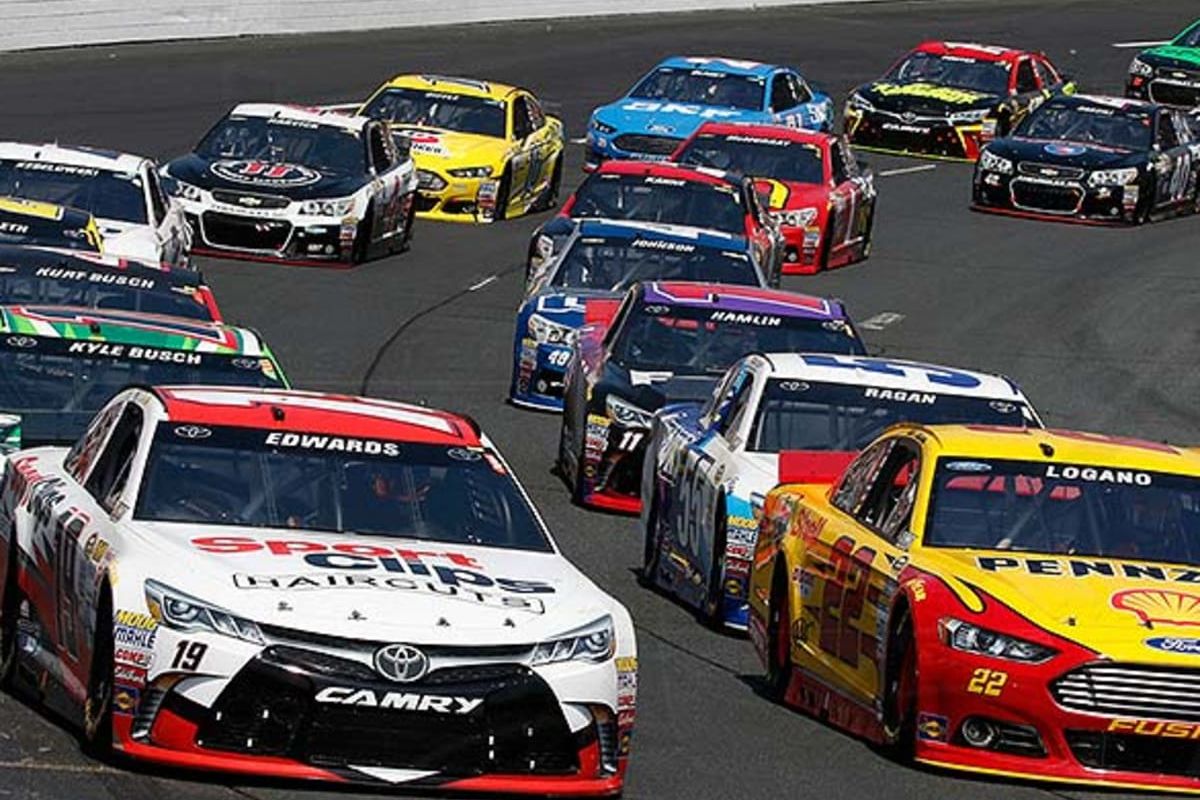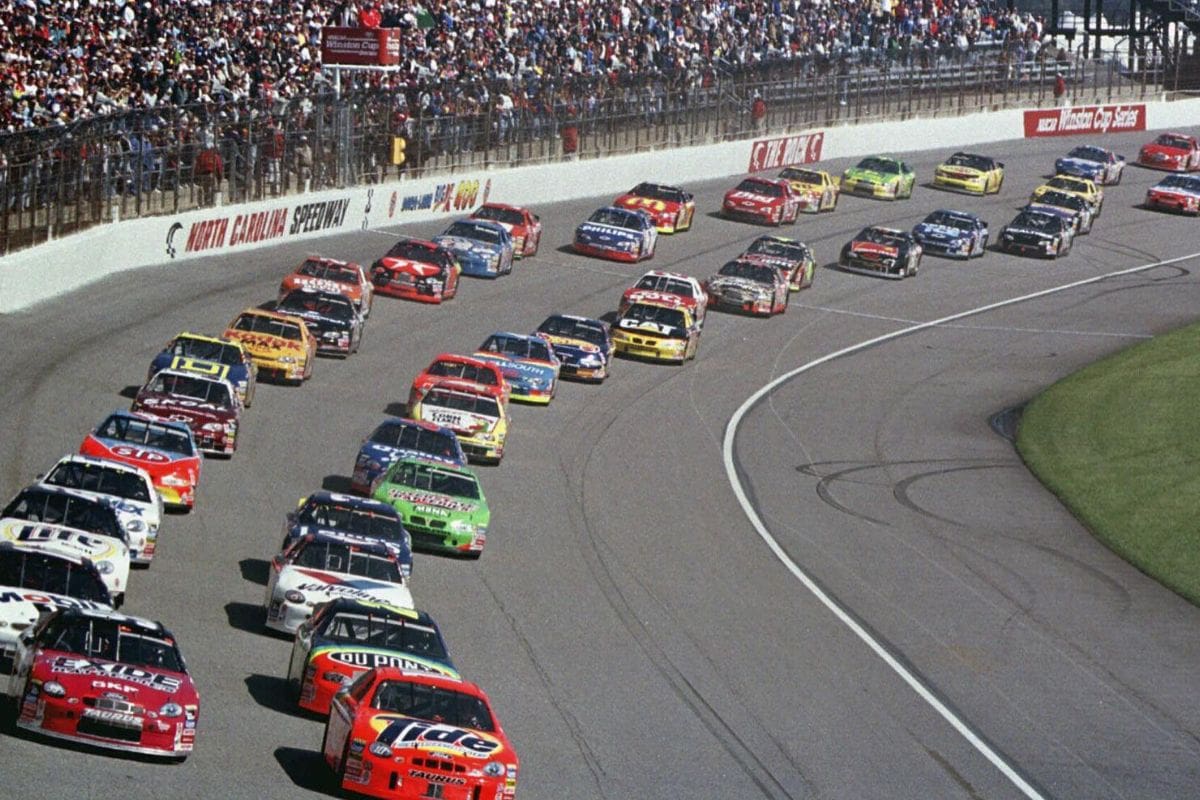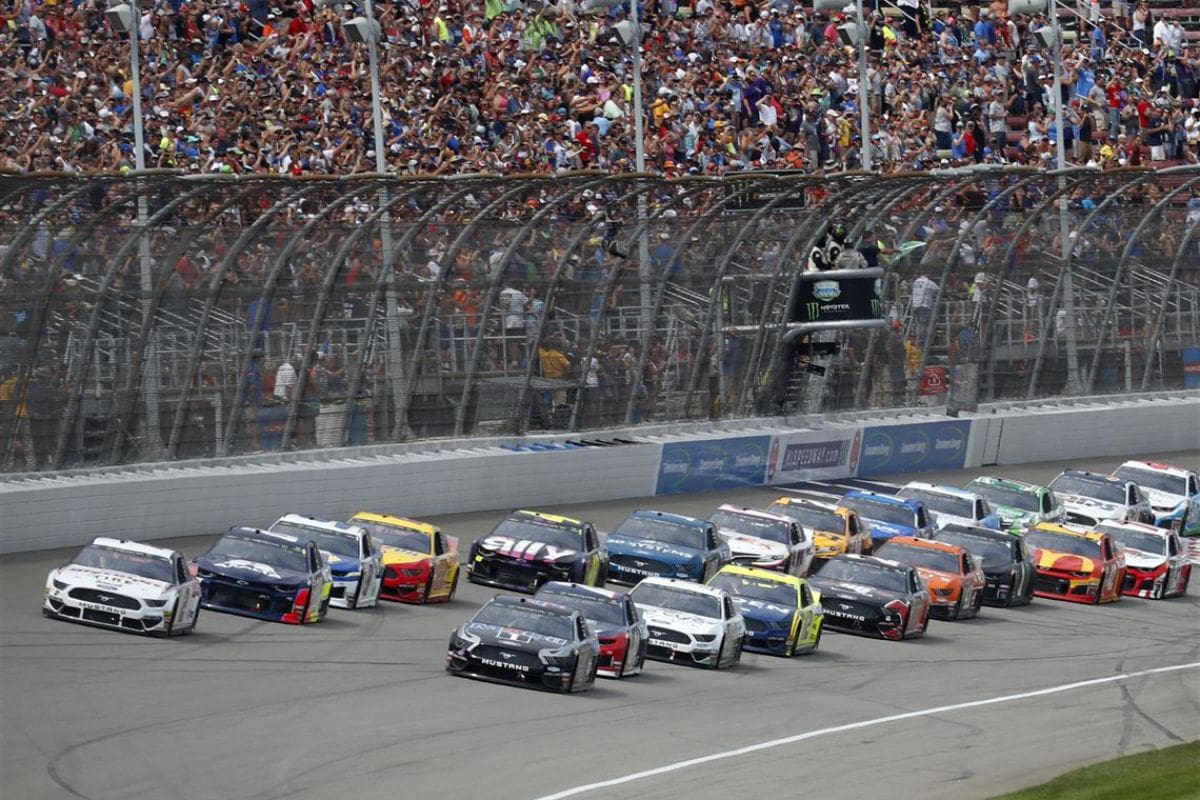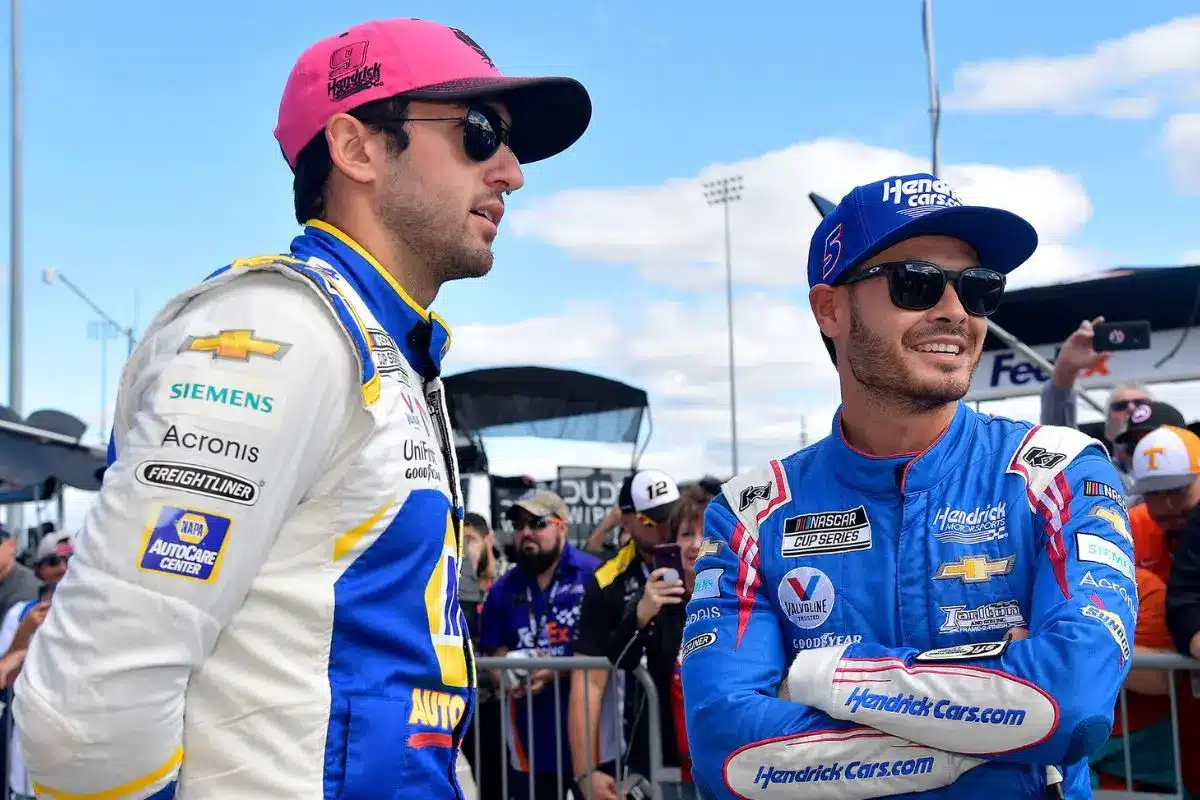Chase Elliott Fell Short Against Kyle Larson: The recent Bristol showdown between Chase Elliott and Kyle Larson serves as a compelling case study in competitive excellence within NASCAR. Larson’s mastery was evident as he led an astonishing 462 laps, securing a decisive victory for Hendrick Motorsports. Meanwhile, Elliott’s tactical tire management and tenacity emphasized the razor-thin margins that define success in this tensed environment. This clash not only highlights the capabilities of both drivers but also raises questions about the dynamics of competition in NASCAR’s playoff landscape.
Key Highlights
- Kyle Larson dominated the Bristol race, leading 462 laps and achieving a significant victory margin of 7.088 seconds over Chase Elliott.
- Elliott’s focus on continuous improvement highlighted the competitive nature of their rivalry, as he sought to enhance his performance under pressure.
- The race showcased Larson’s superior management of lapped traffic, which proved crucial in maintaining his lead over Elliott.
- Tire management strategies were critical for both drivers, affecting their speed and performance throughout the race’s latter stages.
- The outcome at Bristol solidified Larson’s status as a playoff contender while posing challenges for Elliott in the pursuit of the championship.
Hendrick Motorsports’ Success at Bristol
Hendrick Motorsports has consistently displayed its talent at Bristol Motor Speedway, a track known for its heightened risks and intense competition. This past Saturday, the organization reaffirmed its dominance by securing a remarkable 1-2 finish with Kyle Larson and Chase Elliott. The race encapsulated the essence of Bristol—a tight, environment where precision and strategy are paramount.
Kyle Larson’s performance was particularly notable; he led an astounding 92% of the 500 laps, emphasizing his control and mastery of the track. His victory, marked by a considerable 7.088-second Margin of Victory, is now etched in Bristol history as the second-largest since the introduction of digital scoring in 1993. This achievement highlights not only Larson’s driving skill but also the effectiveness of Hendrick Motorsports‘ engineering and race strategy.
Chase Elliott, despite finishing second, exhibited resilience and tenacity. His ability to remain competitive alongside Larson speaks volumes about the synergy within the team. While the results may suggest a clear divide, Elliott’s post-race reflections reveal a complex understanding of the competition, emphasizing the thin margins that often separate victory from defeat.
Hendrick Motorsports’ success at Bristol is a reflection of their all-encompassing approach, integrating driver skill, team strategy, and engineering excellence.

Chase Elliott on Competition with Kyle Larson
The competition between Chase Elliott and Kyle Larson at Bristol exemplifies the fine line that often exists between victory and defeat in NASCAR. As both drivers navigated the environment of the Night Race, their performances highlighted the significance of racecraft and strategy in determining outcomes.
Elliott, who piloted the #9 Llumar Chevrolet Camaro ZL1, articulated the subtleties of their battle during his post-race comments. He acknowledged that while both cars were competitive, it was Larson’s superior ability to manage lapped traffic that ultimately set him apart.
Elliott’s assessment of his own performance reveals a mindset focused on continuous improvement. He stated, “I feel like my car was really good. I don’t think his car was any better than mine,” indicating a recognition that the difference in their results was not solely attributable to machinery, but rather to execution under stress.
“I feel like my car was really good. I don’t think his car was any better than mine. I think he did a little better job than I did getting into traffic, and that was certainly the difference…”
“We were both just pacing ourselves waiting to get the lapped traffic. And I thought I had done an okay job, and he just was able to slice through there and I got hung up.”
“That’s been the norm here, you know? I mean the spring race was kind of an outlier. But you know, I would say this was very normal.”-(ELLIOTT)
.@chaseelliott was 2nd in the Bristol Night Race, but a distant 7 seconds behind teammate Larson.
“I didn’t think he was that much better than us, he just got through traffic really well”#NASCAR #NASCARPlayoffs #BassProNightRace pic.twitter.com/FFvz6cyYlU
— Peter Stratta (@peterstratta) September 22, 2024
The race saw minimal cautions and a lack of tire issues, allowing for a clear competition devoid of external disruptions, thereby amplifying the importance of driver skill and adaptability.
As Elliott reflected on his solid night, despite finishing seven ticks behind Larson, it became clear that the competition between the two is not just about speed; it is also about tactical insight in managing race dynamics.
This dynamic rivalry not only enriches the narrative of NASCAR but also emphasizes the relentless pursuit of excellence that defines elite drivers like Elliott and Larson.
Concerns About Excitement in NASCAR
NASCAR’s recent races, particularly at renowned venues like Bristol, have sparked growing concerns regarding the general excitement and competitiveness of the sport. The Next-Gen era, while intended to improve parity and competition, has shown signs of stagnation, particularly evident in the Spring Race and the more recent nighttime event at Bristol.
The alarmingly low number of cars finishing on the lead lap—five in the Spring Race and only six in the subsequent race—raises critical questions about the current state of racing dynamics.
One of the most striking observations is the seven-second margin of victory (MOV) recorded on the “World’s Fastest Half-Mile.” Such a gap, particularly in a short-track setting, is indicative of a fundamental issue. Factors contributing to this deceleration of excitement may include reduced horsepower or potential gear-shifting problems that have hampered drivers’ abilities to compete vigorously.
These shortcomings can lead to predictable outcomes and lessen the thrill that fans expect from NASCAR events.
To address these concerns, a collaborative effort among drivers, teams, and NASCAR officials—is crucial. If left unexamined, the prevailing issues may not only diminish the allure of near-perfect victories, as seen with Kyle Larson, but also threaten the very core of competition that fans cherish.
Without proactive measures to restore the intensity and unpredictability of races, NASCAR risks alienating its dedicated audience and compromising the sport’s future viability.

Larson’s Historic Performance
A remarkable chapter in NASCAR history was penned during Kyle Larson‘s recent performance at Bristol, where he displayed an unprecedented level of dominance. Leading a staggering 462 laps, Larson surpassed the previous record set by Kyle Busch in 2008, who had led 415 laps. This remarkable feat not only highlights Larson’s exceptional driving skills but also emphasizes the rarity of such dominance on a short track, particularly in the modern era of NASCAR.
Despite being one of the top full-time drivers, Larson’s victory was noteworthy given his inconsistent performance on tracks under a mile, where he had only achieved four wins in his last 56 races. This inconsistency makes his success at Bristol even more notable, as it shows a return to form and a mastery over a challenging circuit.
The variable-banking system at Bristol, implemented in 2007, has shifted the competitive landscape, yet Larson navigated these challenges adeptly, demonstrating both tactical foresight and mechanical proficiency.
Moreover, Larson’s victory comes at a time when the short-track landscape is dominated by a rotating cast of elite drivers, with Denny Hamlin previously emerging victorious at Bristol. Larson’s ability to conquer this highly competitive environment reinforces his status as a formidable contender.
Larson acknowledged the importance of closing out races, emphasizing the relevance of this victory in his HendrickCars.com Chevy. As he continues to evolve in his racing career, this historic performance will certainly serve as a benchmark for future competitors.
“We (the #5 team) dominate a lot of races, but we might not close them all out, so it was really good to close one out in this HendrickCars.com Chevy.”-(LARSON)
Looking Ahead to the Next Round
Following Kyle Larson’s remarkable victory at Bristol, the focus now shifts to the upcoming challenges that lie ahead in the NASCAR playoffs. The intensity of competition is set to escalate as the series moves toward Kansas Speedway, where drivers will face a different type of racing dynamic. The upcoming round will be crucial, not only for Larson but also for his Hendrick Motorsports teammates, who collectively showcased their skill by maintaining a strong presence in the top 10 throughout the race.
With the playoff field narrowing, each race becomes a test of strategy and resilience. The rivalry within the Hendrick camp intensifies as teammates vie for supremacy, while external challengers—including seasoned champions—will certainly seek to capitalize on any missteps. William Byron’s 17th place finish at Bristol serves as a sobering reminder that even the most competitive teams can falter, and securing stage points will be essential in this next phase.
Performance at Kansas will blend of skillful driving, pit strategy, and tactical decision-making. Drivers must adapt quickly to the unique characteristics of the track, which often favors those who can master the art of tire management and positioning.
The question remains: who will harness the intensity to advance? The stage is set for a dramatic showdown as the NASCAR playoffs unfold, with each contender poised to either solidify their championship aspirations or face a premature exit from the pursuit of the Bill France Cup.

News in Brief: Chase Elliott Fell Short Against Kyle Larson
The Bristol showdown showed just how narrow the gap can be between winning and losing in NASCAR. Larson’s remarkable performance, with an unprecedented lead, highlighted Hendrick Motorsports’ strength. Elliott’s smart strategy focused on tire management, showcasing the drive for excellence seen in top drivers. As the playoffs continue, this intense rivalry could influence future races and spark conversations about how competition and fan engagement are changing in the sport.
ALSO READ: Chase Elliott’s Comeback Plan: How Goodyear’s New Tires Could Fix Watkins Glen Woes

